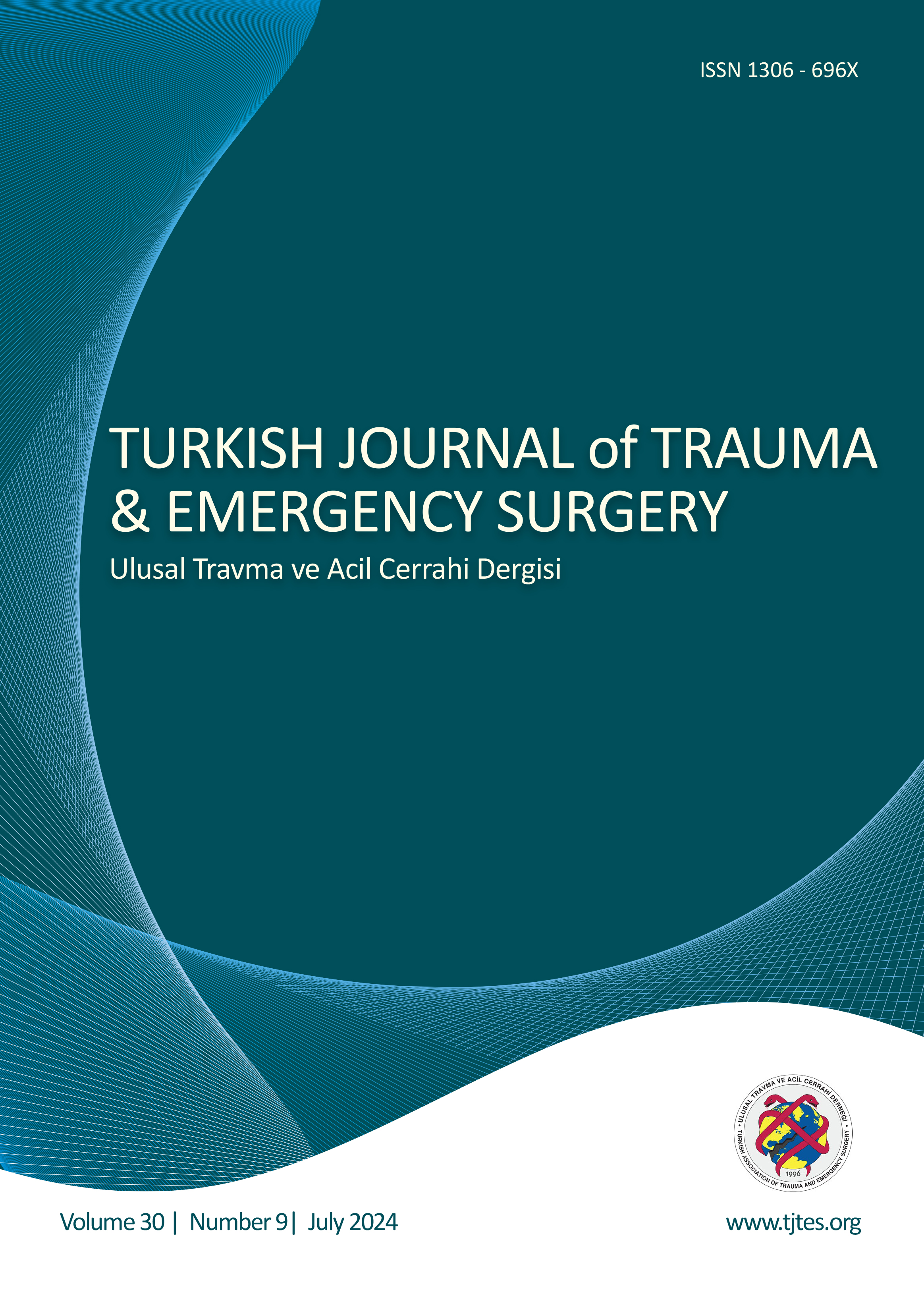Quick Search
Mid- and long-term outcomes of surgical treatment for distal tibial physeal fractures
Hayati Kart1, Agshin Jabbarli2, Mert Gündoğdu2, Oytun Derya Tunç2, Osman Mert Topkar2, Özgür Baysal2, Ahmet Hamdi Akgülle21Department of Orthopaedic Surgery and Traumatology, İstanbul Medeniyet University Göztepe Training and Research Hospital, İstanbul, Türkiye2Department of Orthopaedic Surgery and Traumatology, Marmara University Pendik Training and Research Hospital, İstanbul, Türkiye
BACKGROUND: Distal tibial fractures are among the most common injuries in childhood. The treatment of distal tibial physeal
fractures presents significant challenges for orthopedic surgeons, and potential complications are a major concern. The aim of this
study is to evaluate the mid- and long-term outcomes of patients who underwent surgery for a distal tibial physeal fracture.
METHODS: This retrospective study included 46 patients who underwent surgery for a distal tibial physeal fracture between 2008
and 2022. Patients were evaluated based on the trauma that caused the fracture, the type of fracture (Salter-Harris classification), the
type of reduction performed (open or closed), the type of implant used (K-wire or cannulated screw), the location of the fracture in
the joint (intra-articular or extra-articular), and the presence of complications. The American Orthopaedic Foot and Ankle Society
(AOFAS) score was used for clinical assessment.
RESULTS: The median age of the patients was 12 years (interquartile range [IQR] 10-14). The median follow-up time was 67 months
(IQR 50.5-107). Postoperative anatomical reduction was achieved in 45 patients (97.8%), while 1 patient (2.2%) failed to achieve anatomical
reduction. The median AOFAS score for all patients was 100 (IQR 90-100). Patients treated with K-wire fixation had a median
score of 90 (IQR 86.5), while those treated with cannulated screws had a median score of 100 (IQR 92.5-100). Although the score for
cannulated screws was statistically significantly higher (p=0.024), both groups demonstrated excellent clinical outcomes.
CONCLUSION: Distal tibial physeal fractures are one of the most common childhood fractures and can lead to severe complications.
The mid- and long-term outcomes of surgical treatment of distal tibial physeal fractures are favorable. The method of reduction
(open or closed), the choice of implant (K-wire or cannulated screw), and the location of the fracture (intra-articular or extra-articular)
do not affect outcomes or complications in patients with these injuries. The crucial factor in the treatment of distal tibial physeal
fractures is achieving anatomical reduction.
Keywords: Ankle, distal tibial physeal fracture, premature physeal closure.
Distal tibia fiz kırıklarının cerrahi tedavisinin orta ve uzun dönem sonuçları
Hayati Kart1, Agshin Jabbarli2, Mert Gündoğdu2, Oytun Derya Tunç2, Osman Mert Topkar2, Özgür Baysal2, Ahmet Hamdi Akgülle21İstanbul Medeniyet Üniversitesi Göztepe Eğitim ve Araştırma Hastanesi, Ortopedi ve Travmatoloji Anabilimdalı, İstanbul,Türkiye2Marmara Üniversitesi Pendik Eğitim ve Araştırma Hastanesi, Ortopedi ve Travmatoloji Anabilimdalı, İstanbul,Türkiye
AMAÇ: Distal tibia kırıkları çocukluk çağında en sık görülen yaralanmalar arasındadır. Distal tibia kemik kırıklarının tedavisi ortopedik cerrahlar için
ikilemlerle dolu zorlu bir süreçtir. Potansiyel komplikasyonlar da fizis kırıkları ile ilgili ciddi bir endişe kaynağıdır. Bu çalışmanın amacı distal tibia fizis
kırığı nedeniyle ameliyat edilen hastaların orta ve uzun dönem sonuçlarını değerlendirmektir.
GEREÇ VE YÖNTEM: Çalışmamız 2008 ile 2022 yılları arasında distal tibial fizis kırığı nedeniyle ameliyat edilen 46 hasta ile retrospektif olarak
gerçekleştirildi. Hastalar kırığa neden olan travmaları, kırık tipi (Salter-Harris), redüksiyon tipi (açık/kapalı), kullanılan implant tipi (K-teli/kanüle
vida), kırığın eklem içindeki yeri (eklem içi veya dışı) ve komplikasyon varlığı açısından değerlendirildi. Hastaların klinik değerlendirmesinde AOFAS
skoru kullanıldı.
BULGULAR: Çalışmaya dahil edilen hastaların medyan yaşı 12 yıldı (IQR 10-14). Medyan takip süresi 67 aydı (IQR 50.5-107). Ameliyat sonrası 45
(%97.8) hastada anatomik redüksiyon sağlanırken, 1 (%2.2) hastada anatomik redüksiyon sağlanamadı. Tüm hastalar için medyan AOFAS skoru 100
(IQR 90-100) idi. K-teli fiksasyonu yapılan hastaların medyan AOFAS skoru 90 (IQR 86.5) iken, kanüllü vida kullanılan hastaların medyan AOFAS
skoru 100 (IQR 92.5-100) idi. Kanüle vida kullanılan hastaların AOFAS skoru istatistiksel olarak anlamlı derecede daha yüksek olmasına rağmen
(p=0,024), her iki grupta da mükemmel klinik sonuçlar elde edilmiştir.
SONUÇ: Distal tibia fizis kırıkları, ciddi komplikasyonlara neden olabilen yaygın çocukluk çağı kırıklarından biridir. Distal tibia fizis kırıklarının cerrahi
tedavisinin orta ve uzun dönem sonuçları iyidir. Redüksiyon yöntemi (açık veya kapalı), implant seçimi (K-teli veya kanüllü vida) ve kırığın yerleşimi
(eklem içi veya eklem dışı) bu yaralanmalara sahip hastalarda sonuçlar ve komplikasyonlar üzerinde etkili değildir. Distal tibial fizis kırıklarının tedavisinde
en önemli faktör anatomik redüksiyonun sağlanmasıdır.
Anahtar Kelimeler: Ayak bileği, distal tibia fiz kırığı, erken fiz kapanması
Manuscript Language: English




